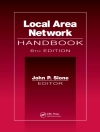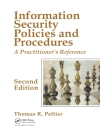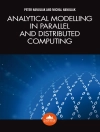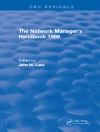This useful text/reference describes the implementation of a varied selection of algorithms in the Data Flow paradigm, highlighting the exciting potential of Data Flow computing for applications in such areas as image understanding, biomedicine, physics simulation, and business.
The mapping of additional algorithms onto the Data Flow architecture is also covered in the following Springer titles from the same team: Data Flow Supercomputing Essentials: Research, Development and Education, Data Flow Supercomputing Essentials: Algorithms, Applications and Implementations, and Guide to Data Flow Supercomputing.
Topics and Features: introduces a novel method of graph partitioning for large graphs involving the construction of a skeleton graph; describes a cloud-supported web-based integrated development environment that can develop and run programs without Data Flow hardware owned by the user; showcases a new approach for the calculation of the extrema of functions in one dimension, by implementing the Golden Section Search algorithm; reviews algorithms for a Data Flow architecture that uses matrices and vectors as the underlying data structure; presents an algorithm for spherical code design, based on the variable repulsion force method; discusses the implementation of a face recognition application, using the Data Flow paradigm; proposes a method for region of interest-based image segmentation of mammogram images on high-performance reconfigurable Data Flow computers; surveys a diverse range of Data Flow applications in physics simulations, and investigates a Data Flow implementation of a Bitcoin mining algorithm.
This unique volume will prove a valuable reference for researchers and programmers of Data Flow computing, and supercomputing in general. Graduate and advanced undergraduate students will also find that the book serves as an ideal supplementary text for courses on Data Mining, Microprocessor Systems, and VLSISystems.
Tabela de Conteúdo
Part I: Theoretical Issues .- A Method for Big-Graph Partitioning Using a Skeleton Graph.- On Cloud-Supported Web-Based Integrated Development Environments for Programming Data Flow Architectures.- Part II: Applications in Mathematics .- Minimization and Maximization of Functions: Golden Section Search in One Dimension.- Matrix-Based Algorithms for Data Flow Computer Architecture: An Overview and Comparison.- Application of Maxeler Data Flow Supercomputing to Spherical Code Design.- Part III: Applications in Image Understanding, Biomedicine, Physics Simulation, and Business .- Face Recognition Using Maxeler Data Flow.- Biomedical Image Processing Using Maxeler Data Flow Engines.- An Overview of Selected Data Flow Applications in Physics Simulations.- Bitcoin Mining Using Maxeler Data Flow Computers.
Sobre o autor
Dr. Veljko Milutinovic teaches Data Flow supercomputing in the School of Informatics, Computing, and Engineering at Indiana University, Bloomington, IN, USA, and previously served for about a decade on the faculty of Purdue University in West Lafayette, IN, USA. He is a co-designer of DARPA’s first Ga As RISC microprocessor on 200MHz and a co-designer of the DARPA’s 4096-processor systolic array. He is a Life Fellow of the IEEE and a Life Member the ACM. He is a Member of The Academy of Europe, a Member of the Serbian National Academy of Engineering, and a Foreign Member of the Montenegrin Academy of Sciences and Arts. He serves as a Senior Advisor to Maxeler Technologies in London, UK.
Mr. Milos Kotlar is a Software Engineer at the Swiss-Swedish company ABB (ASEA Brown Boveri) of Zurich, Switzerland and a Ph.D. student at the School of Electrical Engineering at the University of Belgrade, Serbia. He serves as a TA for Data Flow supercomputing courses and as an RA for Data Flow supercomputing research in the domain of tensor calculus.












